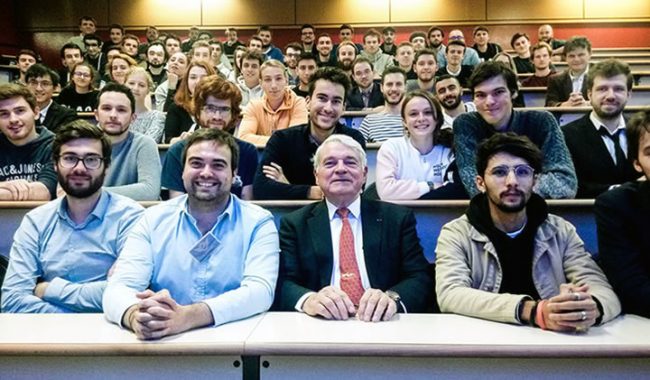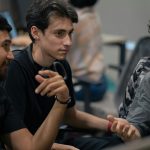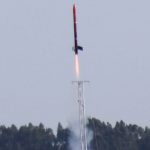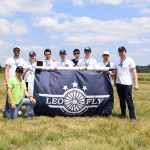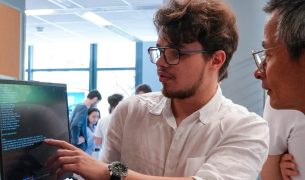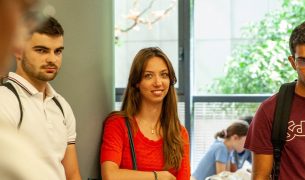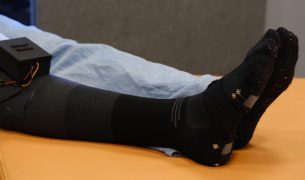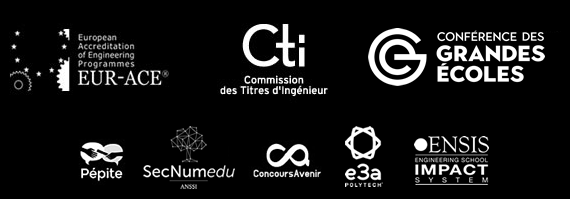On Wednesday, 16 October, Leofly Student Association hosted a talk with Jean-Claude Hironde, the engineer in charge of the Rafale project – spearhead of the French army – to retrace the history of the omnirole fighter conceived by Dassault Aviation and answer all the questions raised by this technological achievement.
Jean-Claude Hironde took a step-by-step approach during this conference reserved for the Pole de Vinci’s students. He offered point-by-point detailed answers to the student’s questions about the launch and evolution of the French fighter project, the largest weapons programme in France military history.
Topics on the conference’s agenda :
- How we’re designing such a complex system ?
- What are the major human and technology-related challenges to be addressed ?
- Retrace the history of a technical prowess, from its origins to its exports;
On this occasion, the deputy technical director of Dassault Aviation engaged students, teachers and spoke his mind.
The man who saw Rafale’s Birth
Jean-Claude Hironde, a graduate of Supaero, began his career in 1969 at the AMD-BA (the Avions Marcel Dassault-Breguet Aviation). After several years working on the French Mirage F1 and CR, he was appointed manager of aircraft design studies for the French Air Force and Navy. Over the years of being in command of the first Rafale, known in France as “ACX/Rafale A”, Jean-Claude Hironde managed the entire design process from concept to final flight tests. Between 1987 and 2007, he held various positions within Dassault Aviation’s management structures. The Maestro who led the Mirage, Rafale and Falcon programs at Dassault Aviation has seen all kinds of sensitive conditions, circumstances, in an evolving strategic era of the history of the French air defence, history, until his retirement, in 2007. Holder of the aeronautical medal, full member of the Air and Space Academy, he is also a member emeritus of the French national aeronautical and astronautical association.
Rafale, an historical play in several acts
Officially launched in 1998 as a true “Force Multiplier”, the Rafale is an adventure one hundred percent French.
Designed to replace seven types of combat aircraft, the Rafale is an omnirole combat aircraft :
- defence and air superiority
- real-time tactical and strategic reconnaissance
- nuclear strike deterrence
- penetration, all-weather ground and sea attack
- Air-to-air refueling for long-range intervention
Rafale, the sixth fighter aircraft designed by Dassault Aviation since the end of the Second World War, was born out of a desire to find a replacement for the French Mirage 2000 and the British, Italian and German Tornado. The prototype of the C Model first flew at Istres on 19 May 1991, under the command of Guy Mitaux-Maurouard.The first production aircraft left the factories in December 2018. Rafale found its first export customers with Egypt and Qatar.
Calling all Model Aircraft aficionados!
Leo Fly started in 2014, as an extension of a Generalist Digital Engineering Projec, at the Pole Leonard de Vinci. The student association currently lists with more than 90 members and offers a variety of events and training courses on aeronautical themes: organizing of conferences, technical meetings, groupe visits, trips, air rallies, afterwork activities, preparation courses for the Aeronautics Initiation Certificate, and other exciting projects such as: mini and experimental rockets launching, hang and flying wing gliding, PERSEUS (European Space Research Student Project), wind tunnels, etc.
https://www.facebook.com/LeoFlyPULV/videos/510068726404142/
Since 2017, LéoFly, the aeronautical and space association of the Pôle Léonard de Vinci (of which ESILV is the engineering school), has also participated in C’Space contest, the French national launch campaign organised by CNES and Planète Sciences.
At this year’s edition, LeoFly launched its three rockets for the first time (Skyception, a nominal flight, Skynight, the mini rocket and the AtomicBlonde experimental rocket) and won the Experience Prize.
Find Leofly on Facebook for more information about the association and its projects. In this page you can also find our tips on how to become an aeronautical engineer or how to work in space.









